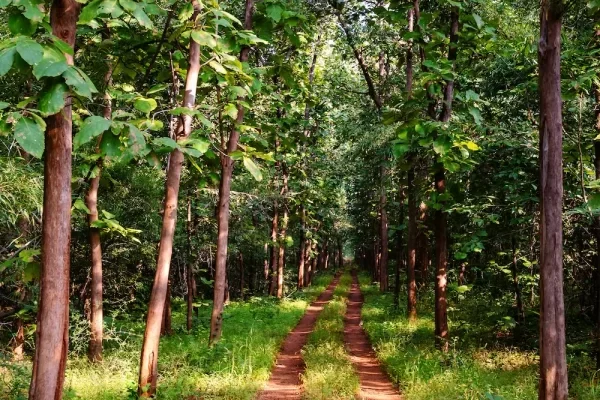Kanha National Park, nestled in the heart of India, is renowned for its stunning biodiversity and thriving wildlife. But beyond its famed tigers and leopards lies an extraordinary world of flora that deserves equal admiration. This botanical paradise hosts a remarkable array of plant species, from towering sal trees to delicate medicinal herbs, each playing a crucial role in the ecosystem.
A Canopy of Giants

The forests of Kanha are dominated by the majestic sal trees (Shorea robusta), which form dense, almost impenetrable canopies. These towering giants not only provide habitat and shade for countless species but also play a vital role in maintaining the park’s microclimate. The leaves of the sal trees fall and decompose, enriching the soil with organic matter and supporting the growth of understory plants.
Diversity in the Understory
Beneath the imposing sal trees lies a diverse understory teeming with life. Bamboo thickets (Bambusoideae), essential for herbivores like the Indian bison and elephants, flourish here. The undergrowth is also rich in shrubs and grasses, including species like the flame of the forest (Butea monosperma), known for its vibrant red flowers, and the medicinal plant Rauwolfia serpentina, used in traditional medicine for treating hypertension and anxiety.
Rare and Endemic Species
Kanha’s flora includes several rare and endemic species, making it a hotspot for botanical enthusiasts. The Indian ghost tree (Sterculia urens), with its striking white bark, is a notable example. Another rare gem is the Saussurea obvallata, also known as Brahma Kamal, which blooms at high altitudes and is revered in Indian mythology. These unique plants not only add to the park’s biodiversity but also highlight the importance of conservation efforts in preserving such irreplaceable treasures.
Medicinal Marvels
The forests of Kanha are a living pharmacy, home to numerous plants with medicinal properties. Terminalia arjuna, commonly known as Arjuna, is a tree whose bark is used in Ayurvedic medicine to support heart health. Similarly, the leaves of the Neem tree (Azadirachta indica) have antiseptic properties and are used in various traditional remedies. These medicinal plants underscore the deep connection between biodiversity and human health, offering potential sources for new drugs and therapies.
Ecological Significance

The diverse plant life in Kanha plays a crucial role in sustaining the park’s ecosystem. Plants provide food and shelter for wildlife, support soil health, and contribute to the water cycle. The interdependence between flora and fauna is evident in every corner of the park, from the smallest insects pollinating flowers to the large herbivores grazing on the grasses. Protecting this intricate web of life is essential for maintaining the ecological balance and ensuring the survival of countless species.
Experience Kanha’s Botanical Wonders
Exploring the flora of Kanha offers a unique and enriching experience, revealing the intricate beauty and importance of plant life in this stunning landscape. To immerse yourself in this botanical paradise, consider a stay at Jungle Camps India. Their knowledgeable guides provide in-depth tours, showcasing the park’s diverse flora and its ecological significance. For those looking to extend their adventure, the Pench Jungle Camp offers another opportunity to explore the rich biodiversity of Central India’s forests.
Discover the untamed beauty of Kanha and beyond with Kanha Jungle Camp, and let the wonders of nature leave an indelible mark on your heart and mind.



